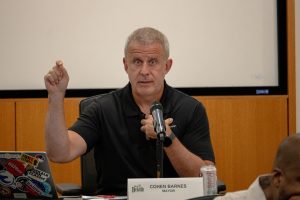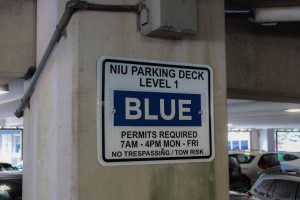DeKalb’s airport utilized by many
February 20, 1990
DeKalb’s Taylor Municipal Airport serves a diverse population, including students, beginning pilots and business executives.
Taylor Municipal Airport, 2100 E. Pleasant St., offers charter flights geared toward businesses as well as instruction and equipment for student and leisure pilots, said Ron Naylor, director of DeKalb’s Public Works Office.
“An airport is very essential to having a quality type of environment that supports the corporate businesses in the city,” Naylor said.
He said NIU athletic teams also use the airport for away games.
However, Tommy Bell, NIU athletic department travel coordinator, said athletic teams normally do not use DeKalb’s airport.
“The only time we use it is to fly the football coach to recruit in some secluded area that the commercial airlines don’t go to,” Bell said.
The airport handles about 30,000 takeoffs and landings in a year, Naylor said.
“You’d be impressed if not surprised at the amount of activity at the airport,” Naylor said.
Chartered flights are available to any airport in the United States, but they are expensive, said Phillip Carey, base operator of R & M Aviation.
“If a single student wants to fly to Detroit or St. Louis it would be cheaper to go to O’Hare,” Carey said, “but if a bunch of students want to take a ski trip to Colorado, chartering a flight is a great idea.”
A round-trip flight from DeKalb to Glenwood Springs, Colo., costs $4,150, not including extra costs for food and extra flying time, he said.
Charter flights are mainly geared toward business travel, he said.
“The flights are designed for the businessman who wants a plane right away without the inconvenience of going through a large airport,” he said.
Carey said R & M Aviation also offers flight instruction.
“To get a license (for a single engine plane) you need 40 hours of flying time and 20 hours of that with an instructor,” he said.
The average cost to get a license is about $2,000, Carey said.
Taylor Airport costs the city about $100,000 to operate every year, Naylor said. The city generates about $40,000 from the airport and receives $60,000 from real estate taxes, he said.
The city funded a project to lengthen the runway from 3,500 to 4,200 feet to allow more types of aircraft to take off and land, Naylor said. A new management center has just been completed as well, he said.
“The city has probably been averaging a couple thousand dollars a year to match federal funding (for improvement projects),” he said.
Mike Carey, vice president of R & M Aviation, said the airport also provides air freight and air ambulance services.
“We have jet fuel and maintenance facilities. We can supply whatever a plane may need,” Carey said.
He said the busiest season is during the summer, but this winter has been “exceptionally” busy.






